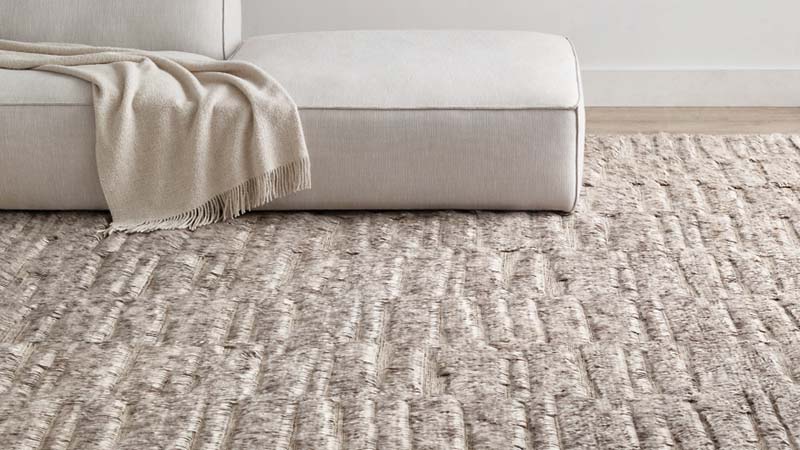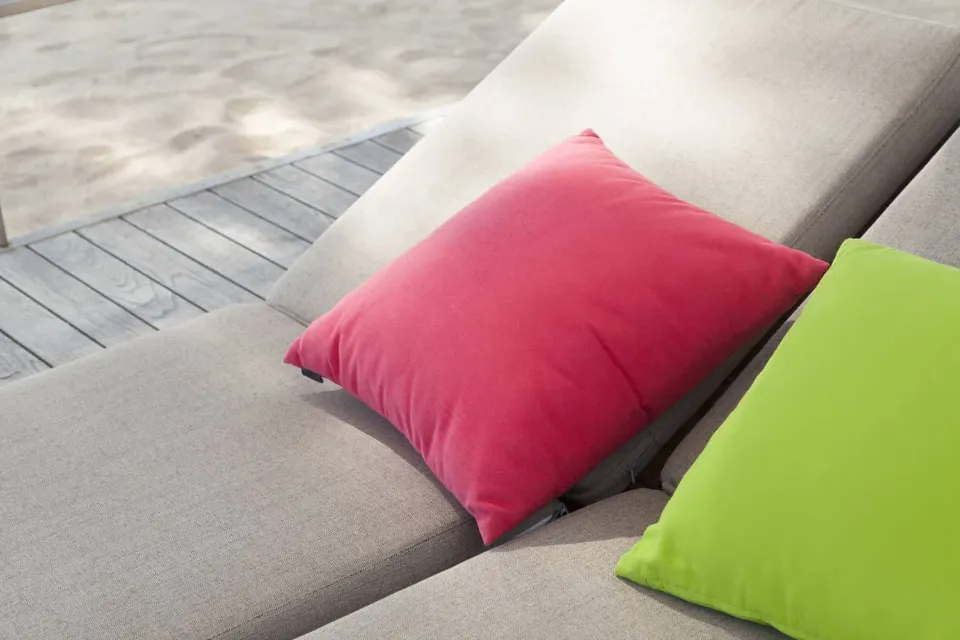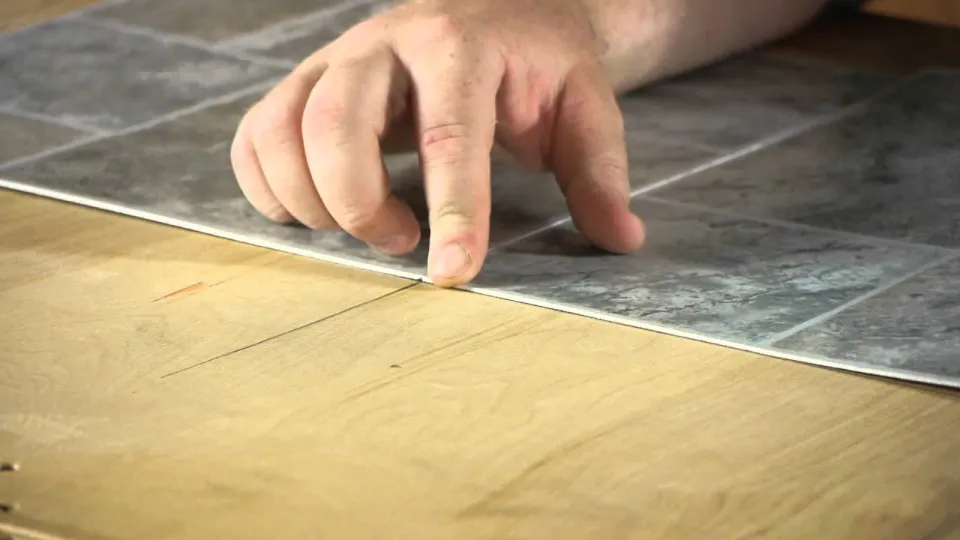How much does it cost to carpet a 10×12 room, then, whether you need to update your den, tiny upstairs bedroom, or newly organized home office?
In a 10×12 space, that amounts to a project totaling approximately $420 to $1,320, including the carpet material, the padding underneath, and the costs of installation.
This carpet guide compiles cost estimates from a variety of online sources, outlines your key financial factors, and provides you with the budgeting resources you need for a quick but significant carpet replacement in your home.
It’s one of the more affordable flooring options, which you’ll be glad to know. You can also update your carpet on a budget in a room this small.
Carpet Installation Cost Breakdown
Coziness, comfort, and a little warmth can be added underfoot with the right carpeting. A room made dingy by soiled, worn-out fibers can be transformed by new carpeting in a contemporary design. The cost of having brand-new carpet installed in your home can range from $3.50 to $11 per square foot, according to data gathered from 7,404 HomeAdvisor members. In a 10×12 space, or 120 square feet, that amounts to a project totaling approximately $420 to $1,320, including the carpet material, the padding underneath, and the costs of installation.
Carpet
Naturally, a sizable portion of your budget goes toward the carpeting itself. Your choice of carpet will determine how much you pay. According to Home Depot’s actual carpet prices, you can find options for as little as $.65 and as much as $12 per square foot. This equates to a budget of between $78 and $1,440 for the carpet material for a 10×12 room. The carpet’s fiber, cut style or construction, and pile height are all determining factors in price.
Padding
The padding beneath your carpet shouldn’t be skimped on or skipped simply because you won’t be able to see it. “Padding matters. It feels so nice to walk on a nice, thick pad in bare feet, so it’s worth it to splurge on great padding,” says Leading realtor in the McDonough, Georgia, area: Shannon Watkins.
You know how painful it is on your knees and feet if you’ve ever walked on carpet that is directly on top of concrete with no padding in between. Padding serves as additional insulation to prevent heat and cold from leaking through the floor, dampens sound, and also lowers allergens in addition to being comfortable to walk on. The cost of carpet padding varies from $.25 to $1.20 per square foot, or $30 to $144 for your 10 x 12 project.
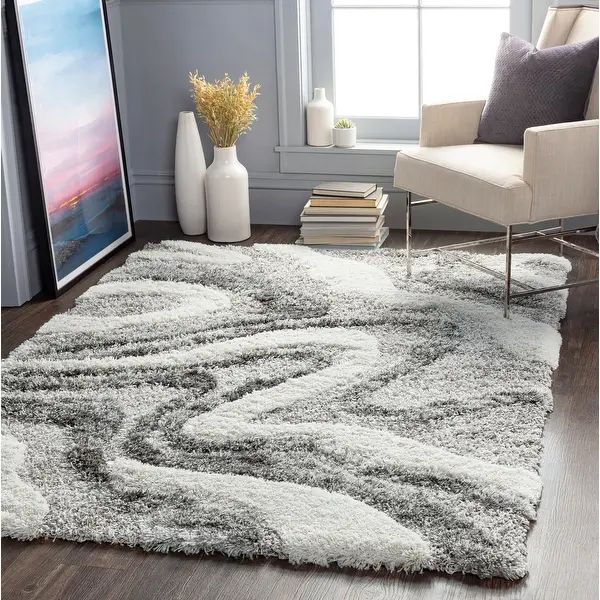
Installation
Any labor expenses related to the carpet installation must also be taken into consideration. If you buy your padding and carpet directly from Home Depot, installation is free. However, some businesses do charge for installation, either on a per-project, per-room, or per-square-foot basis. Installation costs typically range from $1 to $2 per square foot. This translates to a $120 to $240 price range for carpet installation in a 10′ by 12′ room.
And it may be worth it to pay for installation rather than opt for free installation, depending on what services the installers provide:
“Always ask questions before contracting with a carpet company, because they don’t all offer the same services,” advises Watkins. “One might be the cheapest, but you’ll have to put in a lot of manual labor because you have to empty the room entirely before they show up. One might charge a little bit more, but they’ll move and replace the furniture for you.”
Read about How Long Does a Carpet Last?
Carpet Installation: Cost Variation on Room Type
This article’s discussion of cost factors will primarily focus on a regular room. A bedroom is what I mean by “regular room.” However, a lot of factors affect how much it will cost to install carpet. A factor is the kind of room. For example: the cost to install a carpet in a bedroom isn’t the same for the living room:
| Room Type | Low-End Price | Medium Price | High-End Price |
| Living room | $400 | $1,700 | $3,000 |
| Bedroom | $200 | $650 | $1,100 |
| Master bedroom | $300 | $1,000 | $1,700 |
| Basement | $210 | $500 | $900 |
As you can see, installing carpet in a basement can cost up to $900. That is one of the main arguments against carpeting in basements. Let’s now examine the method used to resolve these costs.
10×12 Living Room Carpet Installation Cost
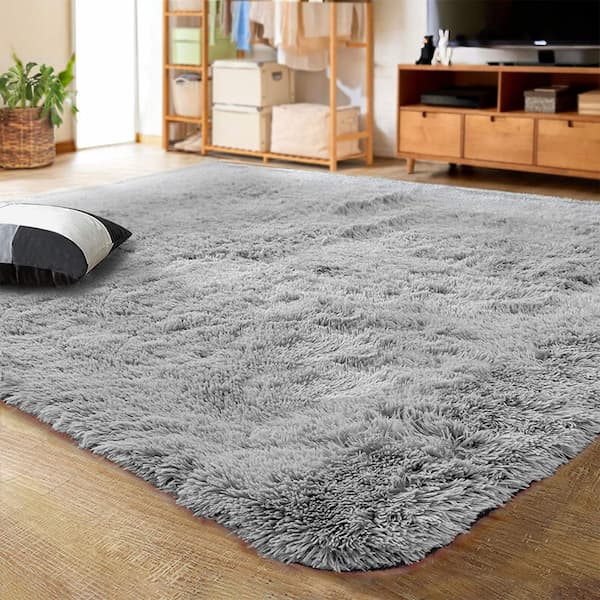
Carpeting for a living room costs between $2 and $8 per square foot for materials and installation. The cost of new carpet for a 10×12 room ranges from $300 to $1,400.
When choosing carpet for your living room, look for softer, stain-resistant short-pile fibers. This is due to the fact that they can support heavy foot traffic while still cushioning bare feet.
10×12 Bedroom Carpet Installation Cost
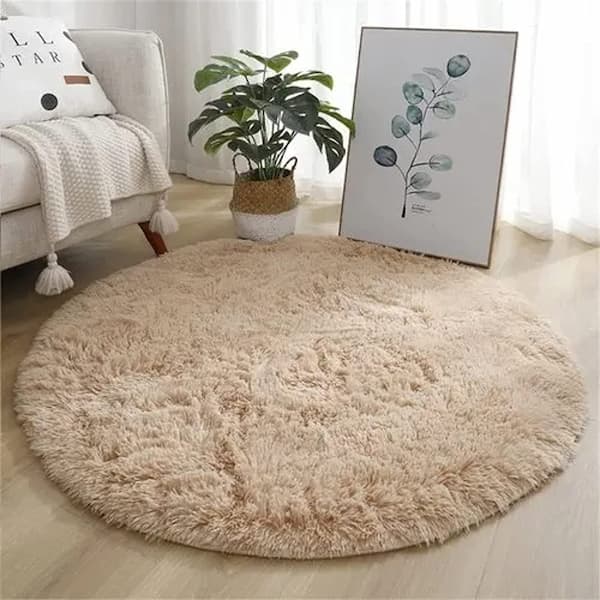
A 10-by-12-foot bedroom can be carpeted for $250 to $1,000. Therefore, the price of installation ranges from $2 to $8 per square foot. Additionally, labor costs are covered by this. Bedrooms are more comfortable and insulated when the carpet is replaced with plush, frieze, or wool carpet. Memory foam cushioning underlay makes bedroom flooring softer.
10×12 Basement Carpet Installation Cost
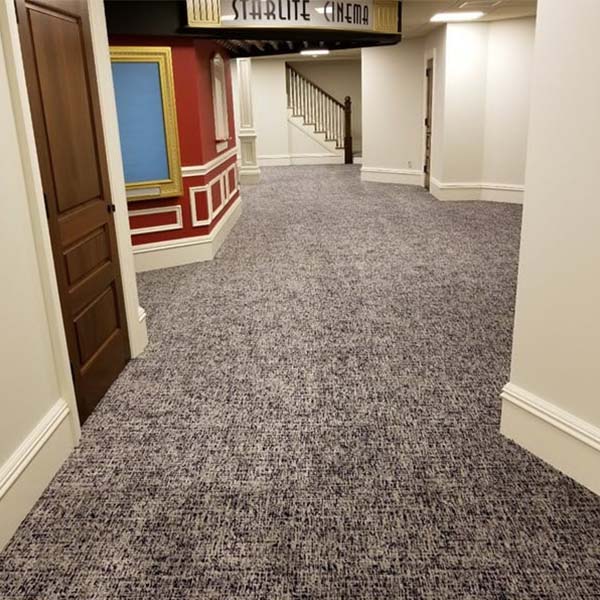
The cost of carpeting 120 square feet of basement ranges from $210 to $900. Synthetic carpet made of polyester, triexta, or olefin is resistant to mold, mildew, and moisture in basements. Basement subfloor insulation may need to be increased or a moisture barrier may be needed to protect the carpet.
A crawl space moisture barrier might cost anywhere between $0.50 and $0.70 per square foot, depending on the quality and thickness. So, for a 10×12 room, consider paying between $60 and $85.
Read about How to Cut Carpet?
What Types of Carpets Are the Cheapest?
There are numerous varieties of carpeting. Each will have a low- and high-quality type, indicating that there is a range and average within each section.
- Builder-grade:Costs per square foot range from $0.50 to $1.50. These floors typically last three to five years before they start to deteriorate. The most common carpet materials for builders are nylon and polyester.
- Mid-grade:These cost between $1.50 and $6 per square foot, but they can last between six and twelve years. Mid-grade textures include sisal, olefin, and triexta.
- High-quality:High-quality carpet has a starting price of about $6 per square foot and can cost up to $21 per square foot. These choices have a lifespan of 12 to 20 years. One type of superior material is wool. Designer and luxury brands with high-end carpeting options are possible to see.
Cost is also influenced by pile height. There are three different types of pile height, which determines the carpet’s height. “There are several types of carpets,” Goldwire said. “Most robust is nylon. The most common and most reasonably priced carpets are those with texture and twist.”
- Low:These are flat, brief materials. They typically don’t collect a lot of dirt or debris and are simple to clean. It’s not soft, and commercial office buildings are where you’ll most likely see it.
- Medium:These could be found in living rooms or bedrooms. While still being very durable, they are more comfortable than low pile carpeting.
- High:These carpets are incredibly plush and cozy. Although they tend to be large dirt and debris magnets, they feel comfortable on your feet. Dog hair and dust are two things these carpets love. Foot indentations are most obvious on carpeting of this type.
Tips for Choosing a Carpet Fiber & Style for Your 10 X 12 Room
As previously mentioned, the carpet itself is primarily to blame for the significant disparity between the high-end and low-end cost estimates for carpet installation. The cost of the carpet as a whole is influenced by a number of variables, including carpet fiber, cut style/construction, and pile height. Examine each of those in more detail now.
Carpet Fiber
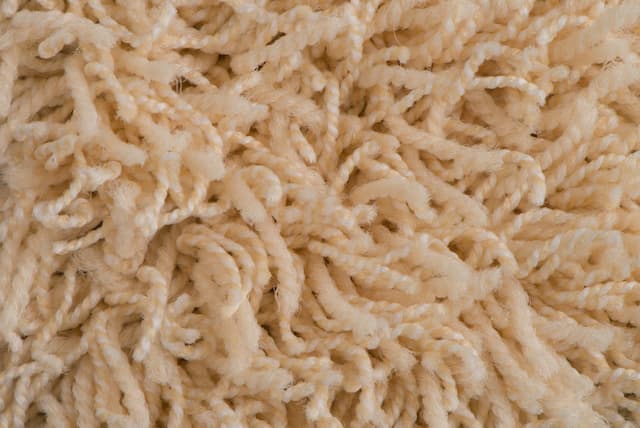
The kind of fabric the carpet is made of is indicated by this. Cost and durability are just two of the benefits and drawbacks that each fiber type has.
Nylon
Nylon typically costs between $2.69 and $8.49/square foot. This synthetic material is the most preferred choice because it is strong and adaptable. Every color, pattern, texture, and pile combination is available. Nylon is supple, resistant to wear, and simple to clean. It isn’t stain-resistant, though. You should look for a variety that has been treated if you require a stain-resistant carpet.
Polyester
Costs for polyester range from $0.65 to $6.59 per square foot. This is one of the most cost-effective synthetic options available. Additionally, it is fading and stain resistant. But when exposed to direct sunlight, some of the more vivid colors might fade. Polyester typically has a lower durability than nylon.
Olefin/Polypropylene
A square foot of olefin/polypropylene typically costs $0.65 to $5.86. The fact that this fiber is colorfast is its main selling point. The color is constructed rather than dyed, unlike other fibers, so it won’t deteriorate or fade over time. Since it is not as strong as nylon or polyester, it should ideally only be used in low-traffic areas.
Wool
You’ll pay between $3.59 and $12.04 per square foot for wool carpet. This is the best choice, though, if you want to install a carpet made of natural fibers. In addition to being stain- and allergy-resistant, it is soft, resilient, and flame-resistant. Wool costs a lot because people frequently associate it with style and luxury because it is natural and durable.
Triexta
Costs for Triexta, a new fiber, range from $2.70 to $6.59 per square foot. This synthetic fiber is catching up to nylon quickly. Because it is softer than nylon and deflects moisture, it is immune to stains and damage brought on by moisture. Furthermore, 37% of it is made of renewable corn. It’s difficult to say, though, if it can match nylon’s level of durability because it’s so new to the market.
Carpet Pile & Style/Construction
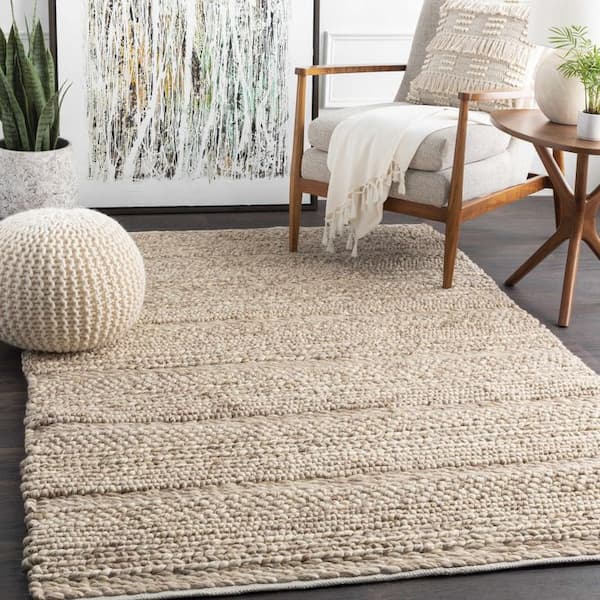
There are two main considerations to keep in mind when comparing different carpeting types: pile and style.
- Pile: height of the carpet
- Style/construction: how the fibers are woven
Pile
Considerations for pile height fall into three main categories: low, medium, and high.
Low: short, flat fibers. A commercial building might have carpet like this. Because it’s short, it doesn’t catch a lot of dirt or debris. This indicates that it is simple to maintain and can withstand heavy use without showing signs of wear. It is only suitable for high traffic areas because it isn’t the most comfortable option.
Medium: with the mid-range length, this carpet is the ideal balance between durability and comfort. It is thus sufficiently cozy for bedrooms and living rooms while remaining reasonably durable. It does, however, collect more dust and debris, but it is short enough to be easily cleaned.
High: this is the epitome of comfort and is ideal for those areas where you need increased sound dampening. If you have this carpet installed in your 10 x 12 room, it will make you feel as though you are walking on air. This comfort does come at a cost, though. You’ll need to clean it more frequently because it draws dust, debris, and pet dander. Furthermore, high pile carpet is more likely to see foot traffic.
Style/Construction
You can choose from a variety of style/construction types when purchasing carpets. The cost of the carpet is also impacted by the type of construction. The five most common construction types and their costs are listed below:
- Berber/Loop: this will cost you $1.67 to $2.44/square foot
- Frieze/Shag: this will cost you $2.78 to $5.00/square foot
- Plush: this will cost you $1.67 to $2.67/square foot
- Pattern/Cut & Loop: this will cost you $2.78 to $5.00/square foot
- Textured: this will cost you $1.78 to $2.67/square foot
How Much Does It Cost to Remove the Existing Carpet?
Before you can install new carpet, you must first remove the old carpet, which can seem a bit laborious and complicated.
“Removal of existing carpet is of nominal expense,” Goldwire said. “It can be accomplished comparatively quickly.”
The carpet removal is included in the labor costs if you’re hiring a professional to install your new carpet. The old carpet may need to be removed and the floors prepped for the new one if you’re doing it yourself, which could add a little extra time. Prior to going the DIY route, Goldwire advised consulting a professional.
“I suggest complete carpeting through a professional instead of DIY,” Goldwire said. “Paddling increases the likelihood that carpet will buckle. DIYers may become frustrated by how difficult DIY projects are to complete.”
Even though hiring a professional might be more expensive, having them come in and do the job correctly is frequently worthwhile. Given the value of your time, you might not want to install a carpet right away if you have never done so before. Consider the full cost of carpet installation, including:
- Measuring
- Carpet removal
- Preparing the floors (oiling hardwood floors and filling in any gaps, if necessary)
- Installing the carpet
- Removing and reinstalling the baseboards (or replacing, if necessary)
Your day job or other obligations may suffer if you attempt to complete this on your own. You might spend some time without a bedroom if you’re installing carpet there. If you’re deciding between doing the job yourself or hiring a pro, carefully weigh your options.
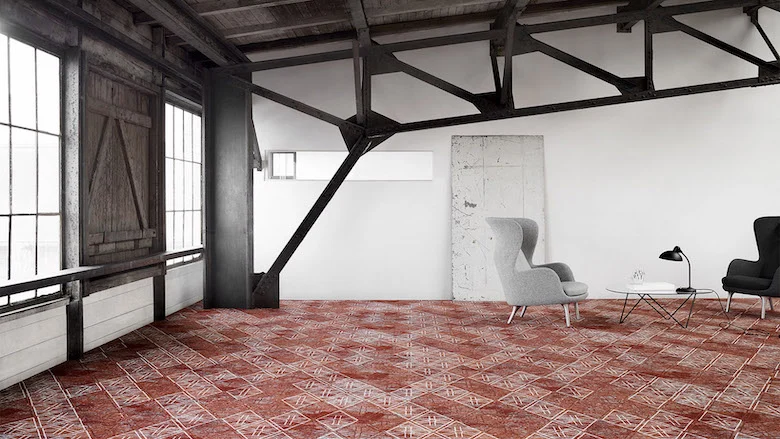
FAQs
How Much Will I Have to Spend on Carpet Maintenance?
Steaming or hot water extraction carpet cleaning costs $25 to $70 a room or $0.20 to $1 per square foot. The expense of re-stretching carpet to eliminate creases is between $50 and $80 per room.
Can Carpet Be Placed on Concrete?
It is possible to lay carpet over concrete. When laying carpet over concrete, the most effective materials are antibacterial rubber or polyurethane foam padding and synthetic carpets. Concrete should be sealed using latex floor enamel in humid environments.
Which One is Cheaper – Tiles Or Carpet?
Carpet costs roughly the same as tiles when placed, ranging from $2 to $15 per square foot. One of the most economical floor coverings to install or replace, according to the WCFA, is cozy, soft carpet.
How Long Will Carpet Installation Take?
Carpet installation usually takes 4 to 8 hours for a typical space. It might take an extra day of preparation to move the furniture, take out the baseboards, take out the old carpet, and restore the sub-floor.
Which One is Cheaper- Hardwood Or Carpet?
Hardwood flooring costs between $9 and $12 per square foot. In comparison, carpets cost roughly $3 to $5 per square foot. Some homeowners favor installing hardwood flooring in a select few rooms as opposed to the entire house.
How Much Does It Cost to Carpet a Room Cheap?
You can get away with paying between $0.50 and $0.75 per square foot for builder-grade nylon, polyester, or olefin materials.
Is Carpet Or Laminate Cheaper?
Generally speaking, laminate is more expensive than carpet, but over time, you’ll save money because laminate is less expensive to repair and maintain and easier to clean.
Carefully Consider Options
Choosing a new carpet involves much more than just going to a store and picking the color you like. You have a few things to think about. You need to consider the pile, construction’s appearance and feel, and durability. Consider the impact the installation cost will have on your spending as well.
Depending on your preferences, carpeting a 10 x 12 room could cost you a few hundred dollars or even several thousand. But if you handle everything yourself, the time and labor costs will be higher.
There are many options available to you, including the carpet type, the required preparation, and who should perform the installation. Make sure to create and stick to your budget because it will guide your project decisions. You’ll benefit in the long run from doing a lot of research and preparation now.
